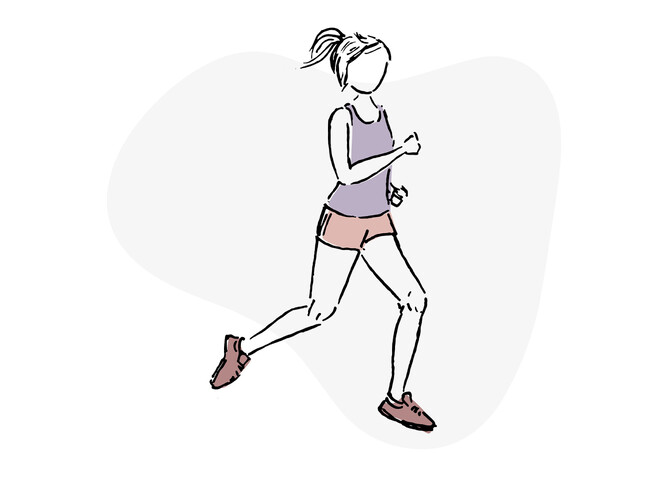POP at 34 / Story at 39
I have always been active. I swam competitively during school and played hockey during my uni days and early twenties. I became a runner in my late twenties after signing up for a run clinic. I ran my first half marathon, in the snow with a cold, and I loved it! I was hooked. I even ran a full marathon a few years later, with the first half faster than my first ever half marathon.
Fast forward a couple of years to two kids later. I used running (especially pram running) to regain my fitness after both boys. I ran a half marathon and felt great but the competitor in me wanted to do better. I wanted to beat my half marathon time.
I had heard about doing kegels (pelvic floor exercises) in my pregnancy but didn’t keep them up regularly after birth.
At one year postpartum after baby number two, I was training for my second postpartum half marathon. I felt a strange feeling – like I had a tampon falling out ... but there was no tampon. It was uncomfortable to walk. I googled, and asked my midwife: were my insides falling out my vagina? I eventually found a local womens health physio who I could see. I was diagnosed with a bladder prolapse. Apparently common for women after having children, but I had never heard of it before.
I was told to stop running and not lift anything over 5kg. I was devastated. I was on track for a personal best in my next half marathon. I had a baby and a toddler (both over 5kg) who required lots of holding/carrying/lifting. I was on a painfully slow 12 week pelvic floor strengthening programme. I was still breastfeeding and told I may not see a huge improvement until I stopped, which I wasn’t ready to do.
Not only were my symptoms uncomfortable (all day), I also struggled mentally. I could no longer do what I loved. Why did this happen to me and why didn’t I know such things could happen?
I researched and researched some more. I found an amazing supportive group for women with prolapse (POP Fitness). I studied online courses on pelvic health and I did the work my physio prescribed. Gradually I built up strength, not just in my pelvic floor but overall strength. I started running again – between lamp posts on my walk to/from work. I built up to 10km runs again, without symptoms and felt amazing. WIN # 1.
About the same time as developing prolapse, I took over teaching Mums & Bubs exercise classes in my local area. I had studied exercise science and gained a certificate level III in Fitness, but the pelvic floor was never mentioned. Being a fitness professional, I knew I needed to do better for the mums in my classes – if I hadn’t heard of prolapse (or pelvic floor dysfunction) before, it was likely the mums in my class weren’t aware either.
After further study specialising in pre and postnatal exercise, I started my own fitness business with a mission to educate mums around a safe return to exercise and pelvic health. I run classes and online personal training specific for mums. One of my favourite parts of my job is speaking to, educating and empowering mums to understand their bodies so they can safely exercise after having a baby and deal with pelvic floor dysfunction.
During lockdown in 2020, I again noticed changes in my pelvic floor. This time I was more educated. I understood my body better and knew what I had to do. I booked in to see my physio after lockdown. My symptoms had worsened slightly and a pessary was recommended. I travelled three hours each way, with both kids, for a one-hour pessary fitting appointment.
Luckily for me, the pessary works well. It supports my pelvic floor so I can continue to be active. Mentally, this was just a little blip (unlike the initial diagnosis). I knew there was still hope. I’d gotten back to running before, I can do it again.
But I haven’t really. And I’m ok with that. This blip has also made me reconsider what I want to do. My pelvic floor will always be something I need to be aware of and manage. I am actually the strongest I have ever been. I now know how to activate my core the correct way. Running has fallen down my priority list, but I am still active in many ways. I swim sometimes, I cycle sometimes, I work out several times a week. I run around the park chasing my boys. It’s taken a few years, but I don’t feel that desire to run long distances as much as I used to. I’ve accepted my pelvic floor isn’t what it used to be and that there are still plenty of other things I CAN do. WIN # 2.
In a way, having POP has given me a purpose. I am passionate about sharing my own experience and knowledge to help other mums navigate pelvic floor dysfunction with hope (or prevent it from occurring in the first place).
So for anyone experiencing pelvic floor dysfunction or any type of injury: you’ve got this! You are STRONG and you will be stronger for the experience. Ask questions. Ask for help. See the right professionals and never give up. Focus on what you CAN do.



